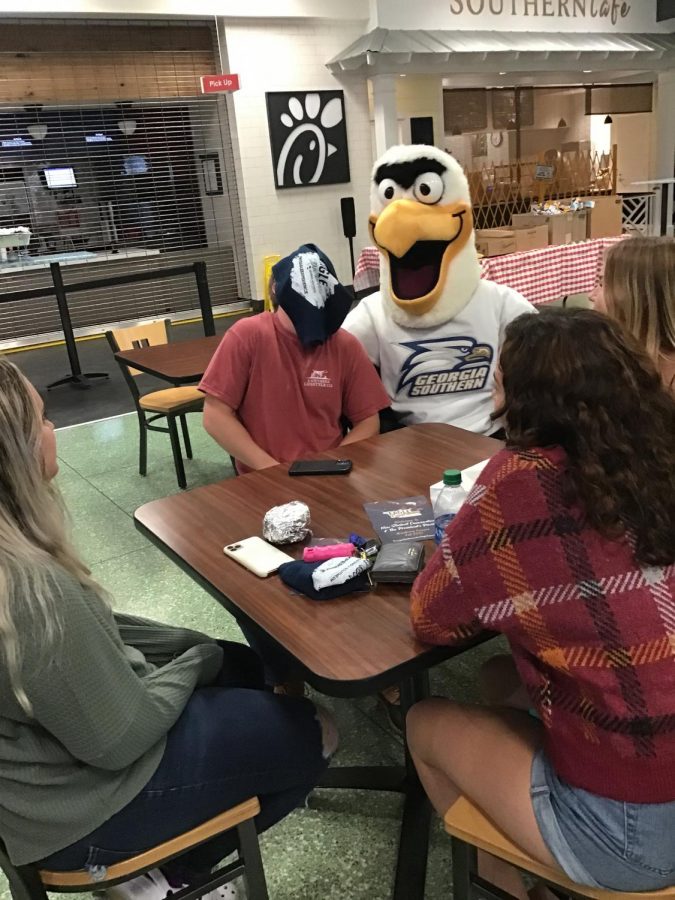The university provided a meal for first-year students in the University Food Court on Sunday, Aug. 8 after their new student orientation in the Fine Arts Auditorium. Here are some pictures from that event.
Author Archives | admin
President’s Picnic Photo story
Posted on 09 August 2021.
Posted in NewsComments Off on President’s Picnic Photo story
Emory Remembers Goizueta Professor Theodore “Ted” Rodgers
Posted on 09 August 2021.
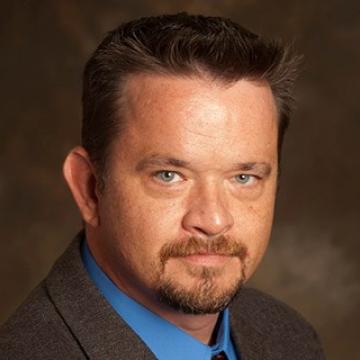
Theodore “Ted” Rodgers is remembered by his colleagues and family as a remarkable professor and caring father.
Theodore “Ted” Rodgers, a Goizueta Business School associate accounting professor who joined the school in 2010, died July 18 after battling cancer. He was 50.
The late professor is remembered by family members and colleagues alike for his caring nature, authenticity and generosity.
“It’s not everybody who can say that their dad is one of their best friends and also somebody who helped them get their career on track early on in my professional life, help me navigate childhood into adulthood,” said Patrick Rodgers (22B), Ted Rodgers’ son. “He was always there to offer advice, never force it on you. He was really good at being who you needed him to be. He could find a way to fill whatever role you needed him to.”
Born in Atlanta on Jan. 2, 1971, Rodgers is survived by his wife, Michele Rodgers, and his two children, Bailey Rodgers (20C) and Patrick. A memorial service in celebration of Ted Rodgers’ life was held at Glenn Memorial United Methodist Church in Emory Village on July 24.
In a statement to the Goizueta Business School, Michelle Rodgers expressed the professor’s appreciation for his colleagues and the University.
“Ted loved Emory so much,” Michelle Rodgers wrote. “Please let everyone there know that they were a hugely important and formative part of his life. He was immensely proud to be a part of the Emory family.”
In his eulogy at his father’s memorial service, Patrick Rodgers described his father as a man who defied conformity.
“He wasn’t just a father to me,” Patrick Rodgers said in his eulogy. “He didn’t fit the mold of ‘just a thing’ anywhere. He wasn’t just a punk rocker who worked his way from pouring concrete after high school to becoming a professor of accounting at Emory University. He wasn’t just the marathoner who was dedicated to going to Boston but would smoke a huge Cuban cigar after every run over 20 miles to celebrate.”
Patrick Rodgers recalled that when he was 13, he had a dream to become a professional skateboarder. Upon hearing this, Ted Rodgers resolved to help his son create a halfpipe in their backyard, teaching him how to build, budget and plan a project.
“There were a lot of small lessons in there that he taught me while I was just having the time of my life building this halfpipe, which, after the fact, I may have used it a grand total of 20 times, because I ended up getting pretty hurt every time I got on it,” Patrick Rodgers said. “He didn’t care about that. He wasn’t like, ‘Why aren’t you using the halfpipe more?’ No, he was like the point was to build it. The point was all the lessons that he taught me through that.”
Interim Goizueta Business School Dean Karen Sedatole also spoke about Ted Rodgers’ tendency to be a maverick, pointing to his role as a family member, LGBTQ+ ally and ‘cigar aficionado,’ among other labels.
“Professor Rodgers was a remarkable person,” Sedatole told the Wheel. “I’ve never known a faculty member who loved teaching more than Ted Rodgers. His brave battle with cancer has come to an end, but his strength, optimism, sense of humor and passion for teaching will forever be his legacy.”
Associate Professor of Accounting Jan Barton said that ever since he first saw Ted Rodgers wearing his Dr. Martens boots to campus, he was a “huge fan.” Barton recalled the professor sticking a “safe space” sticker outside of his office door, a message to let people of all identities know they were entering a supportive and welcoming environment.
“Ted would not only remember the names of my husband and son, but we would frequently trade family stories,” Barton said. “He was a sweet man. He was also hugely passionate about teaching, and his students just adored him. Even as his cancer treatments became more frequent and taxing, he kept showing up for class and engaging with students. He was a teacher to the end. He taught us about integrity, class, grit, humor and love.”
In lieu of flowers, the Rodgers family asked friends and family to honor Ted Rodgers’ life by donating blood, because he relied on blood transfusions during his battle with cancer.
“Through the last year or so of his treatment he used a lot of blood just to stay healthy, really to keep a baseline,” Patrick Rodgers said. “There was … a random grouping of people to give him extra time and to give him extra time with us.”
Assistant Professor in the Practice of Accounting Allison Kays called Ted Rodgers “a phenomenal colleague and such an asset to Goizueta,” and recalled his support during her first semester teaching at the business school.
“Despite all of the emotional and physical effort that went into battling cancer, he always prioritized his students,” Kays said. “He loved teaching, he loved his students and they loved him.”
In his honor, several of Ted Rogers’ colleagues and friends plan to launch a blood drive. While a date has yet to be decided, they said the drive will most likely occur in fall 2021 or 2022.
The post Emory Remembers Goizueta Professor Theodore “Ted” Rodgers appeared first on The Emory Wheel.
Posted in NewsComments Off on Emory Remembers Goizueta Professor Theodore “Ted” Rodgers
Emory students make the most of virtual summer internships
Posted on 09 August 2021.
After three long semesters of online learning, the return to in-person courses is nothing short of exciting. However, before this return, many students are capping off their online learning with virtual internships this summer. While students have learned to adapt to remote learning over the past three semesters, working remotely requires an entirely different skill set.
From communicating with co-workers to participating in team meetings, students must not only learn workplace etiquette, but they must do so without ever setting foot in the workplace itself.
For Val Pacheco (23C), this summer has consisted of a fourth virtual semester. Only this time, she was the one teaching.

Rising junior Val Pacheco (23C) takes a break from her virtual internship on Emory’s Quad this summer.. (Val Pacheco)
As a teaching fellow for Breakthrough Houston, an educational program that helps underserved students prepare for college, Pacheco has become an eighth-grade literature teacher for a virtual class of ten middle-schoolers. Before starting the program, Pacheco reflected on her own remote learning experience so she could apply her feedback to her own classroom.
“One thing that I took from virtual learning [was that] I really didn’t like being talked at for a whole hour,” Pacheco said. “So I always try to give my students options.”
Instead, Pacheco alternates between having students speak, communicate through the chat or private message her. By providing these options, Pacheco aims to create a comfortable space for her students to think, she said.
Despite the virtual nature of the internship, Pacheco has enjoyed teaching, and her experience has confirmed her aspirations of helping others, even though she was initially hesitant to work with middle-schoolers.
“I think that it has really shown me that I like to teach, no matter the age group,” Pacheco said. “Although I don’t know if I would directly want to go into teaching, or become a

Rising junior Val Pacheco (23C) takes a break from her virtual internship on Emory’s Quad this summer.. (Val Pacheco)
teacher, I do quite like working with people through their problems.”
Like Pacheco, Ama Ofosu (23B) has also gained clarity on her desired career path through her virtual internship. Ofosu is interning at ViacomCBS in the Office of Global Inclusion, which aims to increase diversity on screen and in their corporate office.
Although Ofosu would have rather spent the summer at Viacom’s office in New York City, she also acknowledged the extra flexibility that working remotely has given her.
“Being able to work from home, I have more control over my schedule,” Ofosu said.
Since Ofosu is concentrating in film and media management at the Goizueta Business School, her internship has allowed her to experience what working in her field of study would be like.
“This internship has really helped me see what goes behind the scenes of running a huge media company like Viacom,” Ofosu said. “My department works with other departments throughout the company, so I get to see how different parts work together, so that has been an interesting learning experience.”
Viacom is not the only company that has had to run its summer internship program virtually this year because of its large size. Daryl Nana (22B) feels his virtual marketing internship with Bank of America lacks the daily excitement that in-person internships provide.
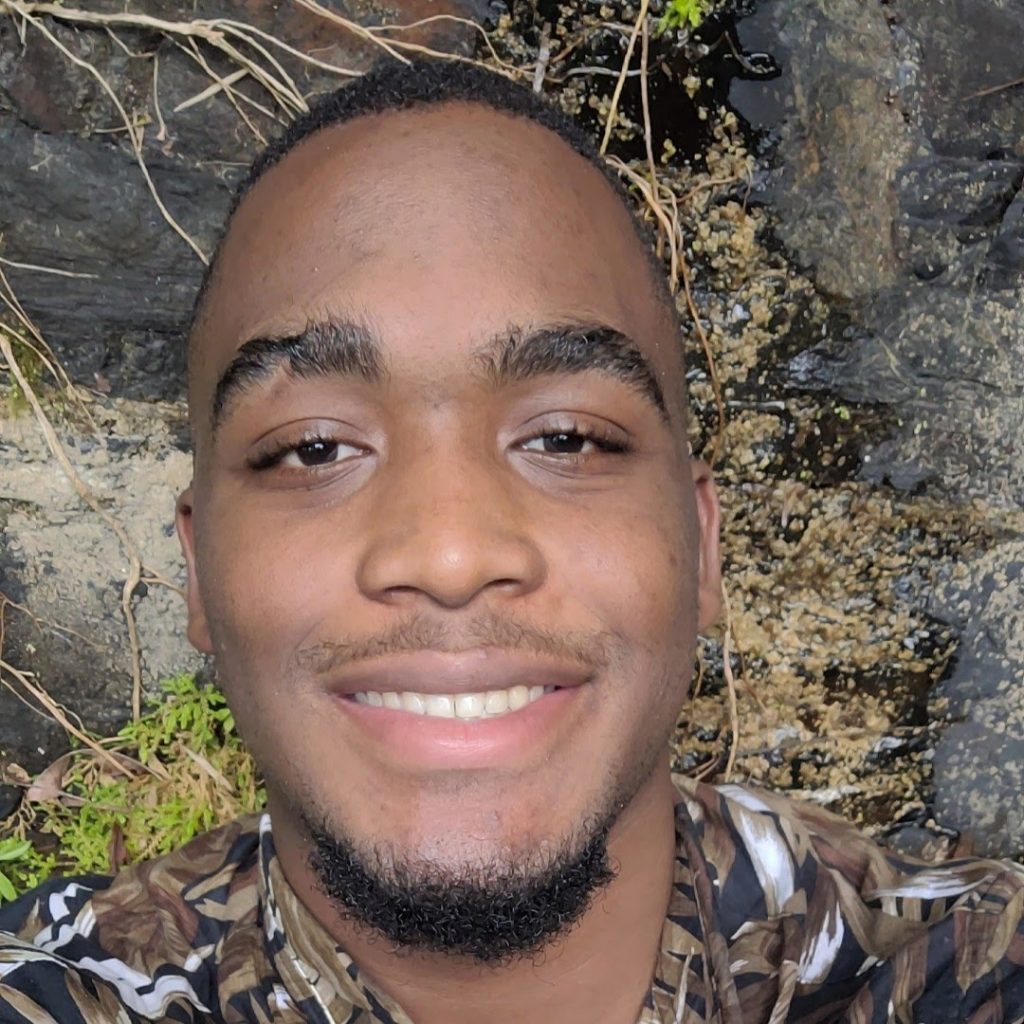
Rising senior Daryl Nana (22B) enjoys seeing the impact of his work as a marketing intern at Bank of America. (Daryl Nana)
“We kind of fall in love with, you know, that suit and tie, walking into a city, holding a briefcase, looking to your left and right with coffee [in] your left hand,” Nana said. “So yes, we’re missing out on that, but overall in terms of opportunities, I actually think I’m able to gain more through a remote format than before.”
Nana noted that his internship has been a valuable networking opportunity, even if the typical communication methods have changed.
“Networking and interactions have kind of been a little bit more robotic,” Nana said. “A little bit more strategic than they’ve ever been.”
While Nana might only be meeting his co-workers and fellow interns virtually in a strictly scheduled manner, the wide reach of the initiatives he has been working on has made up for the lack of in-person interaction.
“I love the idea that my work is going to touch somebody in a different country, or my work is going to touch somebody in a different state,” Nana said.
Learning and working remotely has not been ideal by any means. Even so, the flexibility that working from home provides has granted students free time that they would not have otherwise had, allowing them to pursue their hobbies and personal interests.
“I think people are just working towards themselves for the first time in a long time,” Nana said. “And I think remote work has allowed people to do that.”
The post Emory students make the most of virtual summer internships appeared first on The Emory Wheel.
Posted in NewsComments Off on Emory students make the most of virtual summer internships
Utah Legislature Set to Begin Redistricting Process
Posted on 09 August 2021.
Following the 2020 Census, the Utah state legislature has begun the process of redistricting. When a state redistricts, legislative boundaries are redrawn in order to better represent the population of the state counted during the previous year’s census. This process happens once every ten years.
Data from the Census Bureau for the 2020 Census is set to be released on Aug. 16, 2021.
Rep. Paul Ray, co-chair of the redistricting committee, said after receiving the population data and working with a representative from the University of Utah’s Kem Gardner Institute, he was able to make some predictions about what the changes will look like.
“So, we don’t know where the exact populations are down to the Census block, but we do know the areas of the state and even areas of the counties that have had increased growth,” Ray said.
Ray explained seats will not have to be added or taken away, but rather legislative districts will be redrawn, citing the fact that Utah’s population has moved south to places like Utah and Washington counties.
“It looks like we’re probably going to have to readjust legislative seats to the south,” Ray said.
The redistricting timeline has been laid out by the Utah legislature on their website, starting with the release of the census data on Aug. 16, followed by meetings with the public and the redistricting committee, and ending with the final proposal of new legislative districts to Gov. Spencer Cox for either approval or veto in December of this year.
Matthew Burbank, a professor of political science at the U, explained that it is difficult to point to a district and say that it has been gerrymandered.
“What I would say in that regard is that one of the things about the term gerrymandering is of course, it’s a politically loaded term, right, so it’s not really the case that we can point at a district and say that district has been gerrymandered and another district has not been gerrymandered,” Burbank said.
Burbank said the party that does not hold power in a state will almost always use the term to their advantage.
“You know, they tend to draw lines that, in all honesty, probably will benefit their parties, but the other side almost always says, ‘oh these are gerrymandered.’ But again, there isn’t any kind of clear definition of what exactly a gerrymander is,” he said. “That term … gets used in a very political way, right, so districts which are perfectly fine get called gerrymandered just because the other side doesn’t like him very much.”
The Utah state legislature has chosen a 20-member committee in order to carry out the process of redistricting.
“Throughout the redistricting process, we will talk with and listen to individuals from across the state before making recommendations,” said redistricting committee co-chair Sen. Scott Sandall. “Our committee’s diverse perspectives will help us find the best path forward as we work to represent all individuals, families and groups in Utah,”
c.joost@dailyutahchronicle.com
window[‘bsa_content_preview_only_’] = true;
The post Utah Legislature Set to Begin Redistricting Process appeared first on The Daily Utah Chronicle.
Posted in NewsComments Off on Utah Legislature Set to Begin Redistricting Process
Buening: Protect our Pollinators
Posted on 08 August 2021.
Pollinators are some of the world’s most beautiful and essential species, and their continuing endangerment should alarm everyone. Although not everyone can be a pollinator expert, everyone can participate in different advocacy efforts. To learn more about the pollinator decline and how to address it, I interviewed via email Nynke Blomer, co-founder of Pollinator Ambassadors.
Blomer identified the biggest challenges she believes pollinators face: pollutants in the environment, lack of biodiversity in agricultural landscapes and habitat degradation.
Pollinators, while small in size, greatly influence our ecosystems. For the good of our environments, we must help mitigate these challenges to pollinators by expanding our understanding, implementing better standards of management and becoming more involved.
Efforts to Protect Pollinators
When I hear the word “pollinator,” I immediately think of bees. Arguably the most important species of pollinators, bees have survived because of their adaptability and abundance. But we must recognize how much our actions influence their existence.
Luckily, some representatives have noticed bees’ desperate need for protection. During the 2021 legislative session, House Bill 224, which The Daily Utah Chronicle’s Zahra Saifee wrote about, helped create pollinator protection programs.
However, bees are only one of many essential pollinator populations that human actions influence. We need to account for lesser-acknowledged pollinators, including butterflies, birds, wasps, beetles, moths and bats.
Because every pollinator plays an important role, we need to address them as a whole. Blomer partnered with Nadine Schuller to form Pollinator Ambassadors as young beekeepers in the European Union. They work not only to address the pollinator dilemma but to build youth engagement in biodiversity policymaking, which addresses all pollinators comprehensively.
Blomer also pointed to the EU Pollinators Initiative as a good example of setting “strategic objectives and actions to be taken by the EU Member States to address the decline in wild pollinators.”
Governmental actions like H.B. 224 and the EU Pollinators Initiative positively impact all pollinator species, but we should more effectively coordinate our individual efforts to help pollinators.
The Impact of Pollinators — And Our Impact on Them
For reference, pollinators as a whole contribute roughly $500 billion a year to global food production. Scientists have estimated that about one third of the bites of food we eat exists because of pollinators, and 75-95% of all flowering plants need pollinators.
However, over the past decade, butterflies have declined by 53%, beetles by 49% and bees by 46%. Since 1970, nearly one third of birds have also been lost. These declines have serious repercussions.
As extreme temperatures damage crop production, they simultaneously hurt pollinators. For example, warmer weather has altered the hibernation cycles of bats, as well as their ability to detect prey given greater humidity. These changes, in addition to fungus-induced white nose syndrome and other negative forces, have led to the loss of a third to a half of bat populations.
Habitat loss also spurs major decline, as Blomer illustrated using the example of some highly specialized bee species that “only feed on one type of species of plant, and only fly a limited distance from where they were born.”
If those flowers disappeared due to manmade pollutants such as herbicide, “the bee [wouldn’t] find food, and also would normally not be able to travel far enough to find an alternative food source.” This circumstance would make it likely for both the bee and the plant that it pollinates to go extinct.
Given the extreme biodiversity crises they create, we face serious trouble if these damaging cycles continue on a large scale.
It Starts with You
Blomer wrote, “it all starts in your back yard, balcony or neighborhood” when it comes to helping pollinators. We should consider creating more pollinator-friendly spaces in landscaping. Plant a variety of pollinator-friendly flowers, especially plants native to your climate, to attract pollinators. Blomer also emphasized, “stop keeping manicured lawns and let native flora flourish.”
Other ways to help pollinators thrive include implementing pollinator-friendly solar and rooftop pollinator gardens, which means we plant native flowers and grasses in between solar panels and atop homes or other buildings.
Additionally, we must reevaluate pesticide use. We typically use pesticides to destroy unwanted vegetation like weeds or reduce animal interaction with crops. And even though your intention may only be to kill mosquitoes, your pesticides always kill more than you bargain for. Additives and ingredients within pesticides are toxic to all insects — especially pollinators.
Currently, over 90% of beehive pollen samples and stream samples have contamination from more than one pesticide. Even if bees don’t die from pesticide-ridden pollen, they still contaminate their hive upon returning. And if you do continue using pesticides, consider more innovative brands. Chlorantraniliprole (Acelepryn) does less harm than traditional pesticides with careful application.
Finally, we should all support large-scale conservation efforts to protect pollinators by volunteering with or contributing financially to grassroots organizations. Blomer suggests, “campaign your local government to ban the most harmful pollutants, encourage them to start growing native plants in the green areas they manage, and demand for them to invest in environmental jobs in the community.”
While protecting these essential species during today’s dire circumstances proves challenging, all hope isn’t lost. If we all advocate for greater awareness of our pollinators, we can change management more effectively. For the sake of these beautiful species and ourselves, let’s show more love to pollinators.
s.buening@dailyutahchronicle.com
window[‘bsa_content_preview_only_’] = true;
The post Buening: Protect our Pollinators appeared first on The Daily Utah Chronicle.
Posted in NewsComments Off on Buening: Protect our Pollinators
Gone for gold: Emory alum wins at Tokyo Olympics
Posted on 07 August 2021.
Former Emory University swimmer Andrew Wilson (17C) will return to the U.S. with a new accomplishment following the Tokyo Olympics. Although Wilson wasn’t able to finish with a medal in the individual 100 and 200 breaststroke competitions, he will bring back a gold medal for his contribution to the country’s 4×100-meter men’s medley relay team.
200 breaststroke
Less than 36 hours after tying for sixth place in the men’s 100 breaststroke finals on July 26 at the Tokyo Olympics, Wilson jumped right back into the Tokyo Aquatic Centre’s pool, competing in the men’s 200 breaststroke on July 27.
Wilson’s hopes of winning a medal in the 200 breaststroke began in the preliminaries. To advance to the semifinals, Wilson needed to place in the top 16 of 40 swimmers. Swimming in heat four of five, Wilson had a sense of the time he would need to advance.
With a quick start, Wilson finished his first 50 meters in third place out of eight with a time of 29.19 seconds. During the 100 breaststroke finals, Wilson was in last place after the first 50 meters, a stark contrast between his performance for the two races.
Wilson’s next 50 meters were 3.77 seconds slower than his first 50 meters, and he stayed in the middle of the pack at fourth place at the midway mark. In the next 50 meters, Wilson lost ground and fell to sixth place with the slowest time of all swimmers in the third 50-meter segment.
The former Eagle finished the heat in sixth place with a time of 2:09.97. But Wilson’s time was not fast enough, though. He finished in 17th place behind Great Britain’s Ross Murdoch whose time was 0.02 seconds faster than Wilson’s. While Wilson was able to edge out German swimmer Lucas Joachim Matzerath in the semifinals of the 100 breaststroke for the final spot, the tides turned on him in this race.
4×100-meter mixed medley relay
Wilson’s run in Tokyo was not finished after the individual breaststroke competitions. Wilson swam in the preliminaries of the 4×100-meter mixed medley relay, the first-ever mixed gender relay event in Olympic history. Wilson completed the breaststroke portion of the race, finishing his 100 meters in 59.09 seconds.
Competing with fellow teammates Regan Smith, Tom Shields and Abbey Weitzeil, the quartet finished in 3:41.02 — the second-fastest time of 16 teams — to send the team to the finals. Great Britain finished just over two seconds faster than the U.S. Although Wilson helped Team USA reach the finals, he was not selected to race in the finals, and Team USA finished short of receiving a medal.
4×100-meter men’s medley relay
On day seven, Wilson swam in the 4×100-meter men’s medley relay preliminaries. The team finished seventh overall and secured the second-to-last spot in the finals. Wilson’s 100 meters were completed in 59.02 seconds to help his team finish in 3:32.29.
The U.S. selected Michael Andrew for the breaststroke portion in place of Wilson in the medal race. Andrew was joined by Ryan Murphy, Caeleb Dressel and Zach Apple who broke the World record with a time of 3:26.78. Great Britain won the silver medal while Italy took home the bronze.
However, Wilson still received a gold medal for helping the team reach the finals in the preliminaries. Wilson walked away having competed in three Olympic events, making it to the finals for the men’s 100 breaststroke. And of course, Wilson is the first Emory Eagle and Division III swimmer to win a gold medal at the Olympic Games, leaving Japan with plenty to celebrate.
View this post on Instagram
The post Gone for gold: Emory alum wins at Tokyo Olympics appeared first on The Emory Wheel.
Posted in NewsComments Off on Gone for gold: Emory alum wins at Tokyo Olympics
NBA Draft Grades: Non-Lottery Teams
Posted on 07 August 2021.
Teams not drafting in the National Basketball Association lottery have a wider range of possible grades in their post-draft report card. It’s harder to get great players later in the draft, but when teams do it, it is all the more impressive. What teams failed in this year’s draft class, and who had a successful […]
Posted in NewsComments Off on NBA Draft Grades: Non-Lottery Teams
Running Back Jaylon Glover Commits to Utah
Posted on 07 August 2021.
The University of Utah football team got a nice boost during the start of fall camp with the commitment of Jaylon Glover for the class of 2022. Glover is a running back out of Florida, and is the first commitment at that position from the class for Utah.
Glover’s final schools were Utah, Florida, Florida State, Georgia Tech and South Carolina. Leaving his home state of Florida was a surprise, but Utah will be a good fit for the 3-star running back.
Glover’s commitment marks the seventh player from the 2022 class to commit to Utah, joining Aisea Moa, Jeffery Ugo, Nate Johnson, Brandon Rose, Adarrius Harshaw and Zion Steptoe. Glover is listed at 5-foot-7 and 195 pounds. In high school so far he’s rushed for 4,023 yards and 54 touchdowns.
In a letter written by Glover to the Lakeland Ledger, he praised the coaching staff and Kyle Whittingham for making him feel at home in Salt Lake City.
“The biggest thing with coach Whittingham, the head coach, is that I was looking for stability. With this staff, they’ve been there for a long time. He’s gone from coordinator to head coach. The staff is like a big family. Everyone says it, but when you feel it, you feel it. During this process, I’ve never been lied to. I haven’t had a player say a bad thing about the coaches. Not a bad word from anyone on the team. I want a family. I want everyone to be treated the same and I got the feeling they all treat everyone equally. The staff works together really well and they win games, so I’m comfortable.”
Glover is set up for a career at Utah where he will be able to contribute as early as his freshman season. He cited Utah’s offensive line as a major reason for his commitment.
“For me going in as a running back, they always have good offensive linemen, they’re going to be competitive in the Pac. I see myself doing my thing in the Pac-12. That’s not to say I couldn’t do that in the SEC or ACC, but there’s just a different feeling at Utah. I feel like those guys have a good chance to make the college playoffs.”
The 2022 class is shaping up to be huge for Utah as they continue to build a growing program. Expectations are high for the coming 2021 season, and if these recruits are any indication, Utah will only continue to play at a high level.
e.pearce@dailyutahchronicle.com
window[‘bsa_content_preview_only_’] = true;
The post Running Back Jaylon Glover Commits to Utah appeared first on The Daily Utah Chronicle.
Posted in NewsComments Off on Running Back Jaylon Glover Commits to Utah
Shadley: We Must Adapt to Save the Great Salt Lake
Posted on 06 August 2021.
Salt Lake City’s namesake faces an existential threat. The expansive, briny lake already reached its historic low earlier this summer, on July 26. Most years, the Great Salt Lake doesn’t reach its annual low until October, meaning further depletion is inevitable.
Despite the Great Salt Lake’s unique and resilient ecosystem, the mounting pressures of water scarcity, drought and climate change pose a danger to all the species that live there. For the Great Salt Lake to survive, we must halt our excessive water usage to give our ecosystem a chance to recover, but that will require all of us.
The Bear River Development Project
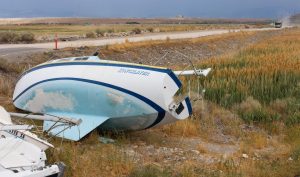
The Bear River Development Project stands as the most imminent threat to the health of the Great Salt Lake. To learn more about the project, and the effects it would have on the Great Salt Lake, I sat down with Nick Halberg, a research and policy analyst at Utah Rivers Council.
The project would build new dams on “the largest service water tributary to the Great Salt Lake,” Halberg said. The proposed plan would divert 25-30% of the river’s water for residential and commercial use in Utah. For an ecosystem already facing extreme water levels, diverting a quarter of its main water source would only exacerbate the situation.
“It will already take some pretty serious action to save the lake,” Halbert said. But if the Bear River Development Project goes through, “it will be the nail in the coffin.”
We cannot afford to further reduce lake levels, but the Bear River Development Project had been proposed in response to the increased water demands of a growing population in Utah. Either Utahns continue using water at the same rate and destroy the Great Salt Lake, or we engage in personal and political actions that reduce our projected water demands.
Opportunities for Water Conservation
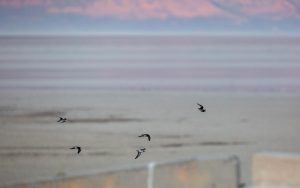
As a result, water districts can “make their water rates super cheap” because it’s such an insignificant portion of their revenue. This entire system leaves Utah cities with some of the cheapest water rates in the American Southwest.
When water isn’t appropriately valued, people naturally use more of it. Despite repeated attempts to reconcile the true value of water in the Utah State Legislature, a bill to restructure this property tax system has never passed.
Utah uses 72% of its water for agriculture, far more than the 33% used by the U.S. as a whole. While one’s initial instinct may be to blame farmers for our water shortage, farming is far less of a problem than the outdated irrigation technology found on many Utah farms.
Even right here in the Salt Lake Valley, farmers utilize crude, inefficient systems “where water just flows through a dirt canal.” These sometimes centuries-old water infrastructure systems remain prevalent throughout Utah’s agricultural industry. Yet, farmers often don’t have the financial resources to spend millions of dollars improving these technologies to conserve water.
The technology to drastically reduce our water usage in Utah’s agricultural industry already exists, it’s only the political will and funding that stand in the way. Halberg said that roughly “280 million dollars” of the $1.4 billion Utah received from the American Rescue Plan Act will go towards “water-specific projects.” The Utah State Legislature will determine the exact apportionment of those funds in the 2022 legislative session.

Why We Must Act
Unless we act, more and more of the water destined for the Great Salt Lake will be diverted for human consumption. The wetlands that will be destroyed by water diversion currently serve as critical habitat for 8 million migratory birds. These birds, made up of over 230 different species, rely on the ecosystem every year. Without it, they have nowhere to stop and feed on mosquitoes during their migration.

However, the lack of water would be a disaster for humans as well. We can expect worse air pollution in a city that already consistently reports some of the worst air quality days in the world. When winds blow through the dried lake bed, it will add PM-10 containing arsenic to our air, leading to a whole host of health consequences.
With Utah’s growing population and droughts amplified by climate change, constraints on our limited water supply will only continue to grow. While many of the runaway effects of climate change cannot be completely undone, we still can save the unique, beautiful ecosystem of the Great Salt Lake.
The survival of the ecosystem which our species has relied upon for so long requires humanity to employ its most successful evolutionary ability: adaptation. We must adapt our cities, agriculture and lifestyles to ones that demand far less water. Doing so is the only way for humans to successfully exist in American Southwest ecosystems.
w.shadley@dailyutahchronicle.com
window[‘bsa_content_preview_only_’] = true;
The post Shadley: We Must Adapt to Save the Great Salt Lake appeared first on The Daily Utah Chronicle.
Posted in NewsComments Off on Shadley: We Must Adapt to Save the Great Salt Lake
The Inkwell Wants You
Posted on 06 August 2021.
Good written and oral communication skills are listed as desired qualifications for nearly every job that someone may apply for no matter what field they enter.
At the George-Anne Inkwell, between the interviews staff writers conduct and the articles they write, all our writers can put experiences and a portfolio of work behind the claim that they have “good written and oral communication skills.”
Not to mention a whole slew of other skills such as working in a fast-paced environment, researching stories and adapting to different situations.
Additionally, you can receive scholarship money, depending on how many hours a week you work, to go to events hosted by the theatre department, the Office of Multicultural Affairs, the Office of Student Activities, Greek Life, and more.
Yes, you have to report on those events, interview people at them, take pictures, and then, write about them later. But otherwise, if you come to work for the Inkwell, you could get paid to have a life outside of the classroom, or the library, and gain marketable skills while you’re at it.
If you are a writer or a photographer looking to build a professional portfolio, we want to give you every opportunity to get your work printed, something you can physically carry with you into any job interview you want.
We are a supportive team, and we want to encourage you to push yourself and strive to make great content, palatable to a wide audience, from your peers to your professors to university administrators.
If any of this sounds interesting to you, please fill out this interest form, or visit the Inkwell of www.thegeorgeanne.com for more information!

Posted in NewsComments Off on The Inkwell Wants You

